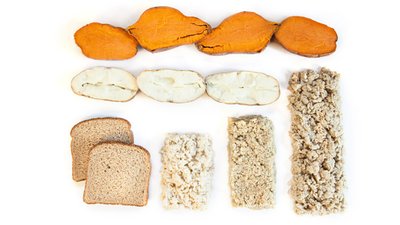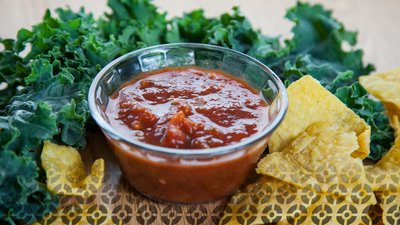I Struggle With... Determining What Foods To Eat And How Much To Eat
The amount of information regarding diet and nutrition on the Internet is overwhelming. Everyone has an opinion about how many calories you should be eating, which foods are the best, and which foods to avoid. It's no wonder so many of us feel lost!
Although you may have already given up trying to wade through all the available material, we want you to know the facts. The truth is, that the rights foods eaten in the right amounts can do more than keep your stomach from rumbling between meals. Proper nutrition and meal planning will help fuel your body throughout the day, help boost energy levels in the gym, and be the primary way your body gains or loses weight.
Yes, good nutrition will require a little thought and preparation up front, but it's essential for your fitness goals. In order to make those goals a reality, you'll need to:
- Calculate how many calories you need to eat each day.
- Determine how much carbs, fats, and protein you should consume.
- Learn the easy way to measure your macros.
- Adopt a diet of moderation and sensibility.
Calorie Breakdown
Calorie Breakdown
If you're trying to determine how much you should eat, it helps to have a good idea of how many calories your body needs on a daily basis. There are multiple ways to figure that out. You can keep it simple by writing down everything you currently eat and drink to get rough estimate of your daily caloric intake. Tracking your food in apps like MyFitnessPal can also help you determine how many calories you're eating.
You can also use a calculator like the one below, which uses the Mifflin-St. Jeor equation to determine the number of calories your body needs on a daily basis. This number is based on your age, gender, weight, resting metabolic rate, activity level, and goal.
Macronutrient Calculator
Once you determine your daily caloric needs, it's time to break your macros down so you know how many calories you should spend on each macronutrient—protein, carbs, and fat. Keep in mind there's no right or wrong number. We can give you suggestions, but ultimately, you need to find out what works best for you and your lifestyle.
Let's say you start out on a simple 40/30/30 plan (40 percent carbs/30 percent protein/30 percent fat). If you were on a 2,000-calorie diet, 800 calories would come from carbs, 600 calories from protein, and another 600 calories from fat. Convert those calories to grams so you know how many grams of each macro you need to get into your daily diet.
- A gram of protein contains 4 calories.
- A gram of carbohydrates contains 4 calories.
- A gram of fat contains 9 calories.
On a 2,000-calorie, 40/30/30 diet, your macros calculate in this way:
- 800 calories ÷ 4 calories per gram = 200 grams of carbs.
- 600 ÷ 4 calories per gram = 150 grams of protein.
- 600 ÷ 9 calories per gram = 67 grams of fat.
These calculations look daunting up front, but you really only need 5-10 minutes to know exactly what and how to eat to achieve your goals!
If you really don't want to worry about numbers, then don't. The last thing you want is for the stress of calculating perfect macros to kill your motivation to eat well. Being aware of what you put into your body is much better than not knowing what you're eating at all. If you're hungry all the time, increase your protein. If you find your energy lagging, you may want to try increasing your fats. Nutrition is part science and part art. You just have to strike the right balance between the two.
If you can't track everything, every day, just do what you can. It all seems like a lot of work at first, but you'll be able to do this on the fly before you know it!
Measuring Your Macros
Measuring Your Macros
Calculating your macros is one thing, but measuring them out is another. If you're just starting to learn about nutrition and how it can influence your workouts and physique, having to weigh out and track anything you put in your mouth can make things complicated. Measuring 30 grams of protein for every meal can often be so overwhelming that many people just give up and go back to filling their plates with whatever is on the table.
No doubt about it, weighing out all your foods will allow you to accurately track your macros. But you shouldn't rely on always having a scale readily available. What happens when you go out to eat with friends or travel out of town? Are you going to carry your food scale with you at all times? Probably not.
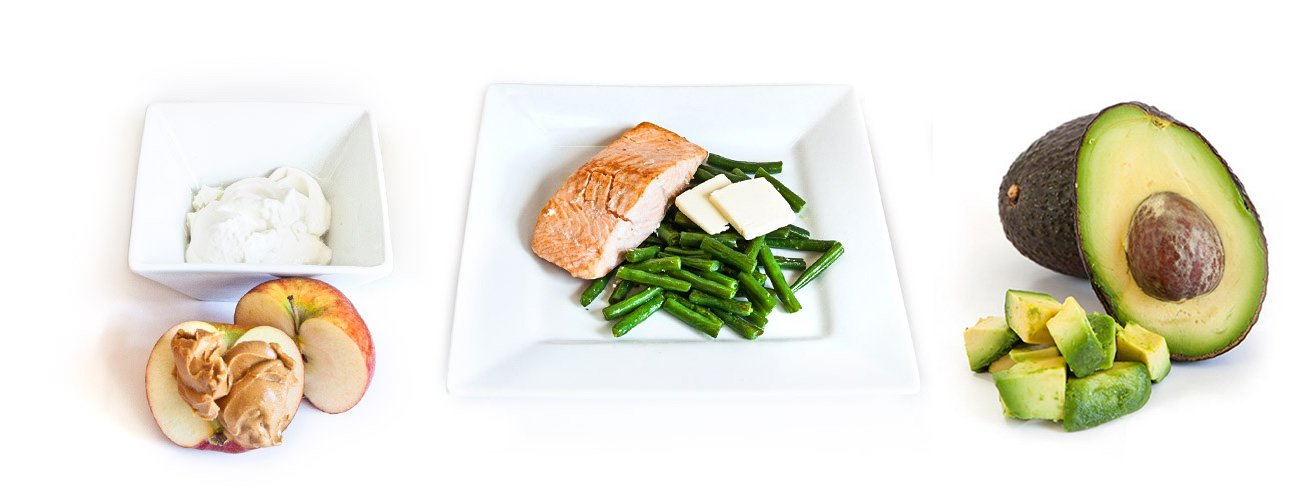
Getting a handle on basic portion sizes for your go-to protein sources, as well as key complex carbohydrates and healthy fats, gives you a great advantage when it comes to choosing and preparing meals. If you don't have a scale readily available to weigh out your protein, turn to your hand.
- Proteins: Use the size of your palm as a guide to measure out a 4-ounce serving per meal.
- Carbs: Use the size of your fist to estimate the amount of carbs you should be consuming at each of your main meals.
- Fat: For liquid fats such as oils, spreads, and butters, incorporate two thumb-sized portions 3-4 times per day, preferably not around your training session. For solid fats such as nuts and seeds, you'll have to count out one serving, which you can often find on the label. For example, 24 almonds is equivalent to roughly one serving size.
Remember, you don't need to memorize portion sizes for every food, just the basic ones that make up the core of your fat-loss or muscle-building goal.
Prioritize Protein
Prioritize Protein
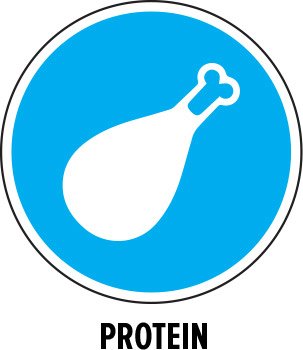
Protein is the building block of muscle and is integral to the diet of an active individual. As a general guideline, your protein intake should stay steady around 1 gram of protein per pound of lean mass (or 0.8-1.0 gram per pound of body weight).
While fat and carbohydrate intake can be modified according to your training plan and fitness goals, protein intake should remain relatively constant no matter what. This is especially true in times of calorie restriction for fat loss.
Aim to get about 30 grams of protein at each of your meals. To cut the fat, opt for chicken and turkey without the skin and leaner cuts of steak like loin and round. When eating out, avoid any proteins that come battered and fried.
Good sources of complete protein: Skinless chicken or turkey, 90 percent (or leaner) ground beef, low-fat or nonfat dairy, eggs, fish and shellfish, pork loin, tofu, and protein powder.
Be Carb Conscious
Be Carb Conscious
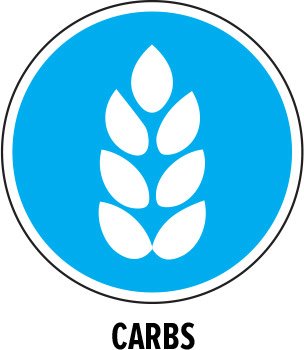
Your carbohydrate intake may be adjusted depending on your training level, physical progress, energy levels, and body cues. The best method for finding that ideal carb consumption is to just ask yourself: "How's this working out for me?"
There is no magic number; everyone reacts to carbs a little differently. Keep in mind that your carbohydrate needs will vary based on your workouts. You may want more carbs on a leg day than you want on arm day. And timing your carbs around your workout can also give you extra energy in the gym. Try to consume roughly 25 percent of your daily carbs about 1-2 hour before you workout, and another 25 percent of your daily carbs post workout.
The important thing to remember about carbohydrates is that some of them can be broken down faster and more easily than others. Fast-digesting carbs like refined sugar are called simple carbs. Your body can use these types of carbs almost immediately. The problem, though, is that eating these carbs can spike your blood sugar quickly, and they aren't a sustainable form of energy. And because these carbs are so readily usable, they also get stored as fat easily.
Complex carbs like oatmeal, however, take a little longer to digest, don't spike your blood sugar as dramatically, and often contain more fiber than their simple counterparts.
If you stick to complex carbs like these instead of eating mostly refined carbs like doughnuts or cake, your energy levels will stay more consistent throughout the day.
Good sources of carbohydrates: Sweet potatoes, quinoa, lentils and beans, oats, berries, green veggies, brown rice, squash, and whole-grain bread.
Figuring Out Your Fats
Figuring Out Your Fats
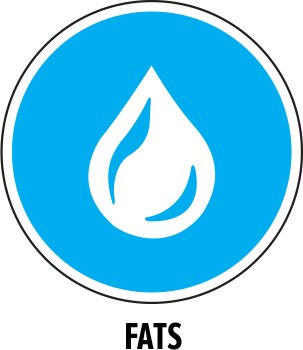
Dietary fats often get a bad rap when you're trying to eat clean, but they're far too important to eliminate entirely. Not only do they contain a number of key vitamins and help us absorb a number of others, but they're also essential in the production of key muscle-building hormones like testosterone.
Aim to get about 30 percent of your daily calories from dietary fats. While the majority of your fat should come from monounsaturated and polyunsaturated sources, a little saturated fat from animal proteins is nothing to fear!
Eating fat is part of a balanced, healthy diet. But how much you need in your diet depends entirely on your body and your goals.
Good sources of healthy fats: Avocados, nut butters, olive oil, coconut oil, almonds, and salmon.
Which Foods Are Good For Me?
Which Foods Are Good For Me?
Figuring out how much you should be eating is only half the equation. Determining which foods will best support your physique and performance goals is equally important.
Labeling foods as "good" or "bad" can be a dangerous game. Some people claim you should stay away from anything white, such as bread, rice, and potatoes. Others will tell you to ban fruit from your diet. And then there are some "experts" out there that tell you to avoid gluten and dairy at all costs. If you try to follow all of this advice, you'll be left eating lettuce and boiled chicken. Yum...
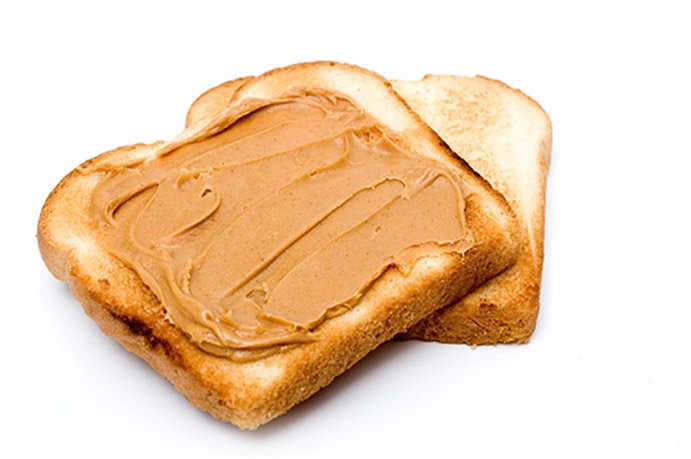
Sure, there are foods that are better for you and provide more nutritional value than others, but rather than ban certain foods from your diet, learn to consume in moderation and be sensible about your food choices.
If you want the most bang for your buck, learn which foods pack in the most nutrition with the fewest calories (aka volume eating). Filling up your plate with leafy greens, lean protein, and low-carb options like squash or berries will give you the impression you're eating a lot of food without busting your daily calorie intake. These foods also typically pack in tons of essential vitamins and minerals to help you meet your micronutrient goals.
Eating a doughnut for breakfast, two slices of pizza for lunch, and bag of Doritos for a snack may fit within your daily calorie goals, but I guarantee those food choices won't supply you with the energy and nutrients your body needs. Not to mention those foods probably won't keep you full between meals, making it that much more likely you'll fall off track with your diet goals.
If your diet consist of nutrient-dense foods 90 percent of the time, go ahead and enjoy a scoop of ice cream of a slice of cake for dessert. No one said you had to omit all the tasty treats from your diet. And let's face it, the moment you start labeling certain foods as "bad" and tell yourself you can't eat them is the moment you start binging on these "forbidden foods" and derail from your diet.

The key is moderation and a little bit of planning.
Allow yourself the occasional treat, but don't let one cookie turn into the entire box. If you have the tendency to go all in when eating treats, either buy preportioned snacks at the store or just don't keep them in the house. Additionally, if you have plans to enjoy a mouth-watering piece of cheesecake for dessert, plan your dinner to be lower in carbs and fat so you can save up for the sweet treat.
Eating clean, healthy foods will go further toward building your physique than if you rely on processed meals, fast foods, and other landmines that dot the typical American diet. In the simplest terms, the simpler your food, the better it is for you.
Next Steps
Next Steps
Counting macros and tracking all your food might seem tedious at first, but stick with it, and in just a few short weeks you'll be able to do it in your sleep! If you're find you diet coming up short in the flavor department, check out "I Struggle With Preparing Meals and Healthy Recipes" to learn how to spruce up your meals.
If you're not sure how to adjust your calories to match you goal, check out "I Struggle With Weight Loss/Weight Gain."
You've taken the first steps in determining your calorie needs. Now it's time to take advantage of the tools and resources on this site to help you reach your goals!
Read More:
From Here To Macros: 4 Steps To Better Nutrition
You've seen plenty of articles saying what your macronutrients mean. But what's involved in turning a plate of food into a usable set of data? The 'Skinny Guy Savior' Vince Del Monte breaks it down.
Measuring Your Macros: What 50 Grams Of Carbs Looks Like
Carbs are your body's favorite energy source. Learn which carb sources are best and how you can easily measure them without using a scale!
Transform Your Pantry With These Healthy Staples
Having healthy options on hand is key when sticking to your diet. Use this checklist to ensure your shelves are lined with the essentials.


